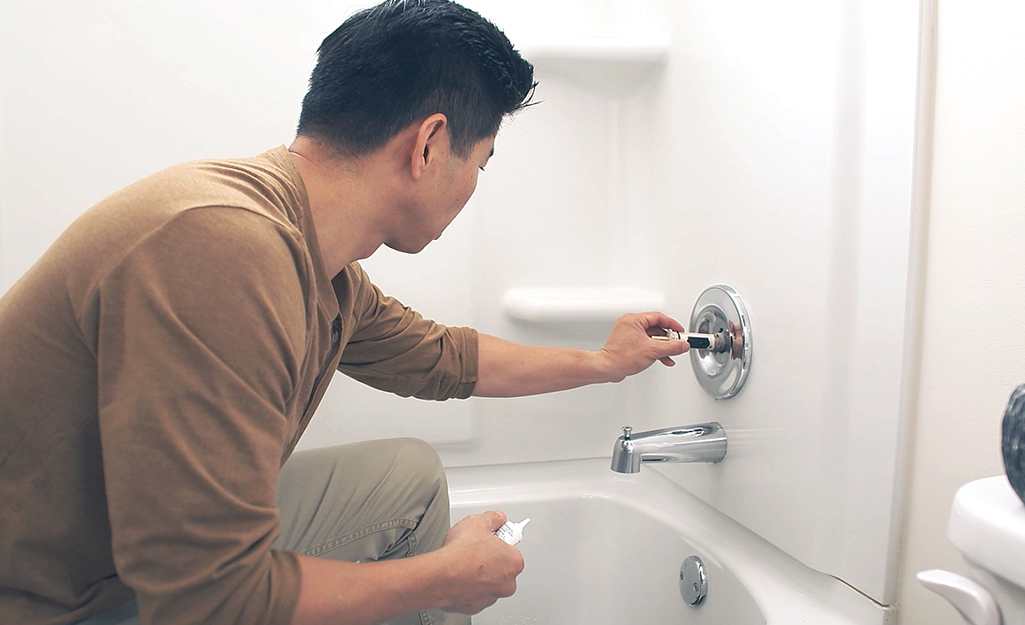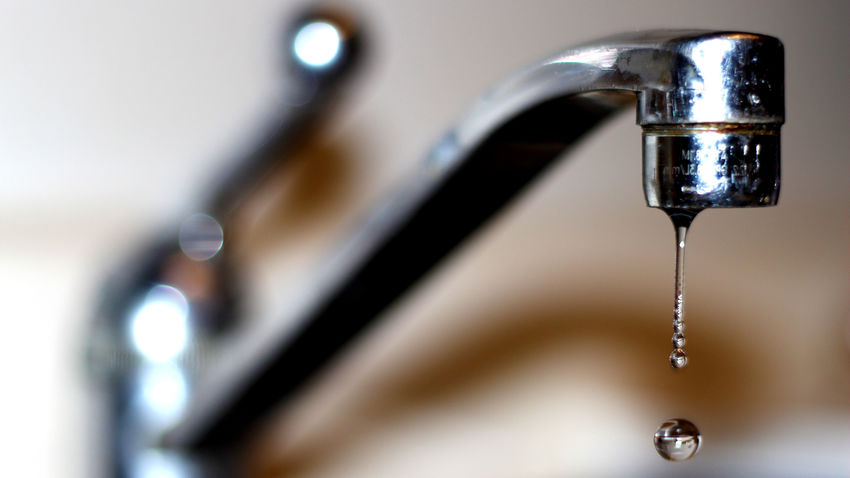Uncovering the Results of Continuous Dripping
Uncovering the Results of Continuous Dripping
Blog Article
Were you trying to locate ideas concerning The Environmental Impact of Leaky Faucets?

Introduction
A dripping faucet may look like a minor aggravation, but its repercussions prolong much beyond the occasional drip. Understanding the effects of a leaking tap is vital for both property owners and the environment. In this article, we'll discover the different impacts of this usual home concern and why resolving it promptly is crucial.
Root Causes Of Leaky Faucets
Leaky taps can arise from a range of variables, including damage, high water pressure, and corrosion. With time, the constant use of taps can cause damaged seals and gaskets, creating leaks to establish. Additionally, excessive water pressure can put strain on plumbing fixtures, leading to leakages. Corrosion and rust can also weaken tap parts, making them vulnerable to leak.
Water Waste
One of the most substantial effects of a leaking tap is water waste. Even a small drip can amount to gallons of drainage in time. This not just increases water costs yet likewise contributes to water scarcity and ecological destruction. Addressing leaky taps promptly is critical for preserving this priceless source and lessening its effect on the world.
Financial Impact
In addition to drainage, dripping taps can also have a significant financial influence. Boosted water expenses are a direct effect of water waste, costing home owners thousands of dollars each year. Additionally, the cost of fixing water damage brought on by leaks can be substantial, particularly if left unattended for a prolonged period.
Ecological Influence
The environmental influence of leaky taps extends past water wastage. By saving water, home owners can contribute to wider initiatives to reduce water shortage and shield natural environments. Lasting alternatives such as rainwater harvesting and water-efficient fixtures can additionally lower the environmental footprint of home water usage.
Technical Solutions
Advancements in technology have caused the advancement of smart taps and water-saving devices that help decrease water wastefulness. Smart taps use sensors to discover movement and adjust water flow appropriately, minimizing waste without compromising convenience. Water-saving tools such as aerators and low-flow showerheads are likewise reliable in conserving water without compromising efficiency.
Worldwide Viewpoints
While leaky faucets may seem like a localized concern, they contribute to broader worldwide difficulties such as water shortage and climate change. In regions currently dealing with water stress, every decline counts, making leakage avoidance and fixing important. By embracing water-saving methods and investing in lasting modern technologies, homeowners can play their component in attending to these pressing international issues.
Regulatory Measures
Federal government regulations play a vital role in mitigating the impact of leaky faucets and advertising water conservation. From building codes that call for water-efficient fixtures to water-saving motivations and discounts, policymakers have a variety of tools at their disposal. By carrying out and imposing these laws, governments can guarantee that home owners focus on water conservation in their every day lives.
Area Impact
Dealing with leaking taps needs collective efforts at the community level. By raising understanding concerning the importance of water preservation and giving resources for leakage discovery and repair work, local authorities can encourage home owners to act. Efforts such as water-saving rebate programs and leakage detection projects can incentivize habits change and advertise accountable water use.
Situation Studies
Real-life instances of the impact of leaking faucets highlight the importance of positive maintenance and prompt repair work. From water damages to skyrocketing water expenses, the consequences of neglecting leakages can be severe. By sharing these case studies, home owners can better comprehend the relevance of addressing leaky faucets without delay.
Educational Campaigns
Educational projects play an essential function in increasing recognition concerning the results of dripping taps and advertising water preservation techniques. Via workshops, workshops, and on-line sources, home owners can find out just how to identify and fix leakages themselves. By equipping individuals with knowledge and devices, instructional campaigns can foster a culture of responsible water use within areas.
Health and wellness Issues
Leaky taps can create conducive settings for mold and mold growth, posing wellness dangers to passengers. The presence of mold and mildew can exacerbate respiratory issues and allergic reactions, specifically in at risk people. Furthermore, water damages resulting from leakages can jeopardize the structural integrity of structures and lead to expensive repair work.
DIY vs. Professional Repair work
When faced with a leaking tap, home owners usually question whether to try repair work themselves or hire a specialist plumber. While DIY repairs can conserve money, they might not always address the hidden issue properly. Expert plumbers have the expertise and devices to detect and take care of leakages correctly, making certain long-term options and peace of mind for property owners.
Safety nets
Preventing leaky faucets needs normal upkeep and proactive steps. Easy tasks such as changing damaged washing machines and seals can protect against leakages from creating. Furthermore, upgrading to top notch components and minimizing water stress can assist prolong the lifespan of faucets and decrease the threat of leakages.
Final thought
In conclusion, the effects of a dripping tap extend much past the occasional drip. From water wastage and raised water expenses to health problems and environmental influence, the repercussions of ignoring leakages can be significant. By attending to leaky taps promptly and taking on water-saving practices, house owners can mitigate these impacts and add to a more lasting future.
Why You Shouldn’t Ignore a Leaky Faucet in Your Home
What Causes a Leaky Faucet?
Various factors can cause a leak, from loose and worn-out parts to corrosion. Your faucet has four essential components from which most plumbing issues will stem: the O-ring, the valve seat, the washer and the gasket.
What Is an O-Ring?
The O-ring is a stem screw that fastens parts of the faucet in place, preventing water from leaking out of the spout. Depending on your faucet type, the stem might have multiple O-rings. Water will drip from the faucet’s handles and base if this part breaks or deteriorates.
What Is a Valve Seat?
The valve seat controls the flow and temperature of the water. Found at the base of the handle, it works as a seal for the faucet’s stem. The valve seat ensures the water is allowed to flow or is blocked as the handles dictate. You’ll know it’s malfunctioning when water leaks from your faucet’s sides.
What Is a Gasket?
The gasket is found between the water inlet and the valve stem. It creates a seal between the faucet and the sink, holding its joints by aerators attached to the stem’s head. Water will trickle out from the base if the gasket isn’t working.
What Is a Washer?
The washer secures the handles and prevents leakage, serving a similar purpose to the O-ring. While the O-ring is ordinarily round and made from an elastic material, such as rubber, the washer is square-shaped and composed of brass, copper and other hard metals. If it malfunctions, corrodes or has been improperly installed, water will leak out of the handles, causing that incessant faucet drip.
Why Is a Leaky Faucet Dangerous?
A leaky faucet left alone for too long can have significant consequences.
Pest Infestations
Since bugs and rodents gravitate towards the scent of water, a leaky faucet will draw pests to your sink. Both are looking for leaks accessible through crawl spaces, which a faucet provides. If you leave water dripping for too long, you run the risk of an infestation.
Rust
If one of the faucet parts has started to corrode, the resulting rust can spread to your pipes and valves with startling speed. The rust might even lead to cracks or other impairments, resulting in more severe plumbing issues.
Your sink could also sustain damage from a leaky faucet. The water in your tap possesses sparse elements of calcium and iron that can stain your sink with repeated and prolonged exposure. Once those elements in the water have been open to the air for some time, your sink will start to rust, creating marks that can be difficult to remove.
https://www.tomsmechanical.com/blog/why-you-shouldnt-ignore-a-leaky-faucet-in-your-home

As a fervent reader about Potential Health Risks Associated With Leaky Faucets, I thought sharing that piece of content was essential. Liked our post? Please quickly share it. Help other people discover it. I appreciate reading our article about Potential Health Risks Associated With Leaky Faucets.
Report this page